Label printers face recurring ink drying issues that impact deadlines and profitability. This guide addresses root causes, solutions, and preventive measures for commercial printing environments.
1. Slow-Drying Water-Based Inks
Common Causes:
- High humidity (>70%) slowing solvent evaporation
- Substrate pH imbalance (ideal: 6.5–7.5)
- Incorrect anilox volume (exceeds 8 BCM)
Actionable Solutions:
- Install humidity controllers (target: 45–55% RH)
- Pre-treat alkaline paper with 2% citric acid solution
- Use 600–800 LPI anilox rollers for thin ink films
2. UV Ink Curing Failures
Critical Factors:
- Mercury lamp intensity below 120 W/cm²
- Oxygen inhibition in nitrogen-rich environments
- Substrate reflectivity <65%
Proven Fixes:
- Replace UV lamps after 800–1,000 hours (measure with radiometer)
- Add 0.5–1% amine co-initiators to counteract oxygen
- Use aluminum-coated liners for metallic labels
3. Ink Adhesion Loss on Plastic Films
Failure Analysis:
- PET/PE surface energy <38 dynes/cm
- Residual release agents from converters
- Ink Tg (glass transition) mismatch
Repair Protocol:
- Flame-treat films (increase to 42+ dynes/cm)
- Wipe with ethanol:water (70:30) mixture
- Switch to low-Tg polyurethane inks for flexible packaging
4. Ink Cracking After Drying
Mechanical Stress Indicators:
- Modulus mismatch: Ink (3 GPa) vs. substrate (5 GPa)
- Excessive tension (>2.5 N/mm²) in rewinding
- Low plasticizer content (<15%)
Prevention Methods:
- Formulate hybrid epoxy-acrylate inks
- Maintain 1.8–2.2 N/mm² web tension
- Add 8–12% dioctyl phthalate (DOP) plasticizer
5. Intermittent Drying Consistency
Equipment-Related Issues:
- ±15°C temperature fluctuations in hot-air dryers
- Clogged IR dryer reflectors (dust accumulation)
- Conveyor speed variance >5%
Calibration Steps:
- Install PID-controlled heaters (±2°C accuracy)
- Clean reflector panels weekly (90% isopropyl alcohol)
- Use encoder-driven servo motors for web control
Advanced Prevention Framework
Material Testing Protocol
- Measure substrate porosity with Gurley test (20–100 sec/100ml)
- Verify ink viscosity using Zahn Cup #2 (22–28 sec flow time)
Pressroom Climate Control
- Maintain 23±1°C temperature with HVAC systems
- Monitor dew point (keep <10°C below air temp)
Preventive Maintenance Schedule
- Replace UV lamp electrodes every 400 hours
- Rebuild dryer blowers annually (CFM ≥ factory spec)
Staff Training Priorities
- Teach ink mileage calculations (sqft/lb ±5%)
- Demonstrate ASTM F1249 moisture barrier tests
Conclusion
UV curing has transformed the label printing industry by offering faster, more efficient, and environmentally friendly solutions. Its ability to enhance print quality, increase productivity, and support sustainable practices makes it an invaluable technology for label manufacturers. As the industry progresses, UV curing will remain at the forefront of innovation, driving the production of labels that not only meet but exceed the demands of consumers and businesses alike.












